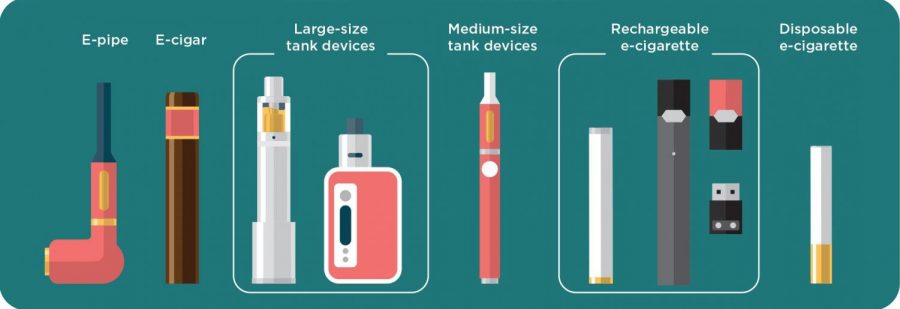NIU community reacts to national trend of vape-related deaths
September 16, 2019
In light of an ongoing investigation by the Centers for Disease Control and Prevention regarding an influx of reported lung illnesses associated with e-cigarette use, NIU community members were asked to react to the recent news.
Out of the 380 cases reported from 36 states and one U.S. territory, 52 cases have been reported in Illinois, including one death, according to the Illinois Department of Public Health website. At least one case was reported in DeKalb county.
{{tncms-inline alignment=”right” content=”<ul> <li>Do not return to cigarette smoking after using e-cigarettes in response to the latest reported illnesses</li> <li>If you have used e-cigarettes and are experiencing symptoms similar to those reported, contact a health provider immediately</li> <li>Do not add any substances to e-cigarette products</li> <li>Do not buy e-cigarettes off the street</li> <li>Refrain from the use of e-cigarettes and vaping products</li> </ul>” id=”8f0a15e0-07cf-4423-9518-36cf1cfec446″ style-type=”bio” title=”CDC Recommendations” type=”relcontent”}}
Adnan Mustafa, store manager at The Hotspot, 901 Lucinda Avenue, said that one of his regular customers, who started vaping recently, has switched back to cigarettes since the reports of lung illnesses.
Since vaping is relatively new, it’s hard to gauge the complete effects of it, as opposed to cigarettes which have been researched extensively, Mustafa said.
“Because of the recent reports, I’ve actually seen a slow decline,” Mustafa said when asked if he’s noticed an increase or decrease in the purchase of e-cigarettes.
Though an isolated cause has not been identified, all reported cases involved similar symptoms and the use of e-cigarette products within the last 90 days according to the CDC’s latest outbreak information. Most patients reported using e-cigarette products containing THC, while some using only nicotine. Since there has been no evidence of infectious diseases, chemical exposure is likely associated with the lung illnesses.
With an increase in underage vapers, the Federal Government set its sights on banning flavors used in e-cigarette products, according to the Associated Press.
“E-cigarettes are devices that deliver an aerosol to the user by heating a liquid that usually contains nicotine, flavorings, and other chemicals. E-cigarettes can also be used to deliver marijuana or other substances,” according to the CDC. Sold in various shapes and sizes, e-cigarettes are sometimes accompanied by interchangeable, refillable pods or cartridges containing the inhaled substance, if not built into the device prior to purchase. The use of e-cigarette products is also known as vaping.
Logan Chase, sales clerk at The Smoke Shop, located on West Lincoln Highway, said that the recent reported illnesses aren’t necessarily attributed to an increase in the use of e-cigarette products.
“All these [e-cigarette/vaping products] have been out for maybe 5 or 6 years, but recently cartridges have been why people have started to drop like flies,” Chase said. “It’s pretty much people going out of their way to make cartridges themselves, putting in chemicals that shouldn’t be smoked.”
If uneducated users of e-cigarettes attempt to make their own cartridges, they risk mixing chemicals that could have undesirable effects, Chase said.
NIU student Jack Usry, a friend of e-cigarette users, said that they haven’t expressed any concerns about their e-cigarette products. Usry said that this is likely because they use vaping specifically to stop smoking cigarettes, rather than for recreational purposes.
“As long as you’re not endangering anyone else or pressuring anyone, do what you want,” he said. “But if your starting to pull people into it, that’s not cool.”














